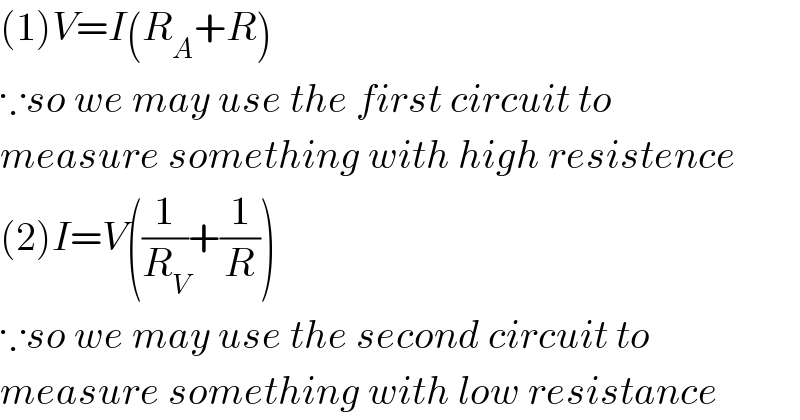Question Number 69901 by Rio Michael last updated on 28/Sep/19

Commented by Tony Lin last updated on 30/Sep/19

$$\left(\mathrm{1}\right){V}={I}\left({R}_{{A}} +{R}\right) \\ $$$$\because{so}\:{we}\:{may}\:{use}\:{the}\:{first}\:{circuit}\:{to} \\ $$$${measure}\:{something}\:{with}\:{high}\:{resistence} \\ $$$$\left(\mathrm{2}\right){I}={V}\left(\frac{\mathrm{1}}{{R}_{{V}} }+\frac{\mathrm{1}}{{R}}\right) \\ $$$$\because{so}\:{we}\:{may}\:{use}\:{the}\:{second}\:{circuit}\:{to} \\ $$$${measure}\:{something}\:{with}\:{low}\:{resistance} \\ $$
Commented by Rio Michael last updated on 28/Sep/19

$${which}\:{of}\:{this}\:{circuits}\:{measure}\:\:{high}\:{Resistance},\:{please}\:{give} \\ $$$${a}\:{reason}\:{for}\:{your}\:{answer}. \\ $$
Answered by jagannath19 last updated on 29/Sep/19

$$\mathrm{2}{nd}\:{circuit}?? \\ $$
Commented by Rio Michael last updated on 29/Sep/19

$${why}\:{please} \\ $$
